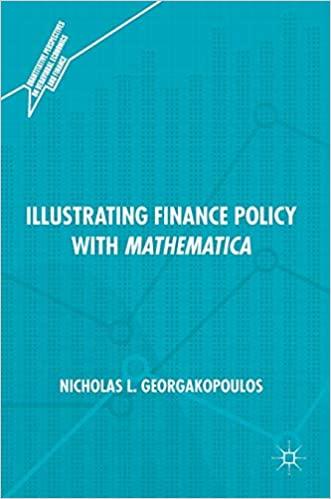Question
11. An automaker has a beta of 0.8, and its total assets are $20 billion. It considers merging with a software company whose beta is
11. An automaker has a beta of 0.8, and its total assets are $20 billion. It considers merging with a software company whose beta is 1.7, and total assets are $1 billion. If they indeed merge, what would be the discount rate for the combined company? The risk-free rate is 1%, and the market risk premium is 7%.
6.06%
6.90%
8.50%
9.75%
12.
Which of the following statements are correct?
(i) Investors do not require compensation for exposure to firm-specific risk.
(ii) Certain investment strategies result in an average return higher than the CAPM predicts. A possible explanation of this finding is that the CAPM may not be sufficient to capture all sources of systematic risk. (iii) Most fund managers have not yet figured out a strategy to beat a benchmark consistently. This finding implies that all market participants are rational.
(iv) Suppose that an investor correctly perceives the probability of future stock prices. The correct understanding will always lead to a rational decision in stock investment.
(i), (ii)
(ii), (iii)
(ii), (iv)
(ii), (iii), (iv)
13.
Consider a company whose stock has a beta of 2.0. The market value of its outstanding equity is $100 million. The risk-free rate is 3%. Suppose that the single index model holds in reality. Thus, before a firm-specific event, the stock's excess return equals the market's excess return multiplied by the beta. The market's rate of return turns out to be 8%. What would be the stock's rate of return?
Group of answer choices
13%
16%
19%
22%
14.
Suppose now that the company wins a lawsuit, which has been expected to bring $10 million to the company as a settlement. The actual settlement turns out to be $7 million. Including this firm-specific event, what would be the stock's rate of return? (Assume that the market-wide component in the stock return is the same as the previous question)
10%
16%
20%
26%
Step by Step Solution
There are 3 Steps involved in it
Step: 1

Get Instant Access to Expert-Tailored Solutions
See step-by-step solutions with expert insights and AI powered tools for academic success
Step: 2

Step: 3

Ace Your Homework with AI
Get the answers you need in no time with our AI-driven, step-by-step assistance
Get Started


